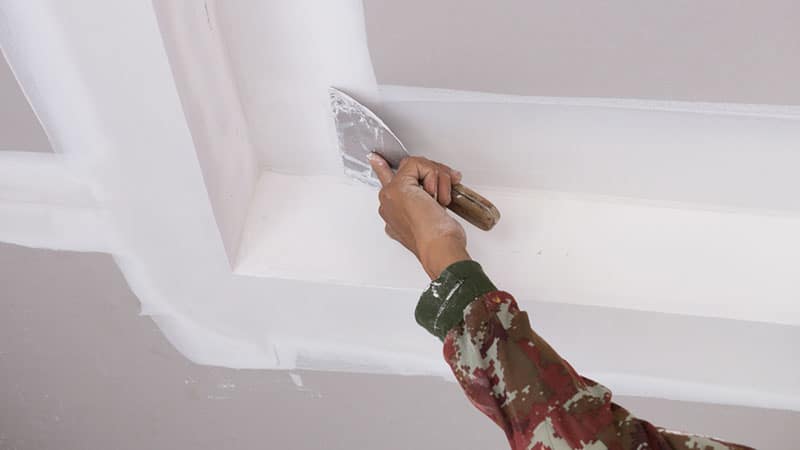When it comes to home renovations, everyone gets an opportunity to be creative and play around with designs and materials to make their house look spectacular. However, among all the repairs and renewals, most homeowners completely forget about the ceilings. Even when they do consider giving their ceiling a remake, they are often unable to choose the right design. Instead, they end up picking one that they later regret.
If you are decorating your house or are having trouble in deciding the best design for your ceiling, then this blog post is for you! We’ll be taking a look at the 11 different types of ceiling textures for homes.
From common textures to more unique ones, we feature the best ceiling designs that will give your house style and character. The best thing is that most of these designs will also look great on walls. You can extend the pattern on the ceiling to complement the walls, use another texture in contrast or experiment in whichever way you like.
Read on to find out more.
Ceiling Designs - Spray Types
1. Orange Peel

An all-time favorite among most homeowners, the Orange Peel texture is a type of spray-on ceiling designs that got its name because it closely resembles the outer skin of an orange.
It’s sometimes called splatter or eggshell, depending on the smoothness and overall look achieved at the end. The texture also comes close to that of an eggshell.
This design is a popular choice due to the ease with which it can be created. It does not require any outside help from home renovators and is perfect for novice designers who want to add some flair to their home interior.
To create this texture, all you need is a hopper gun and a mixture of thin mud. Add the paste to the gun set at high pressure and spray the required surface. Adjusting the hole size will change the amount of mud splattered, thereby changing the end look.
2. Popcorn - (Stucco, Cottage Cheese, Fine Aggregate, Acoustic Ceiling)

This type of ceiling design is also known as stucco, cottage cheese ceiling, fine aggregate or acoustic ceiling.
As is evident by the name, Popcorn ceiling refers to a ceiling texture that looks similar to popcorn pieces placed on a plate.
Creating this texture requires materials such as Styrofoam or stucco in addition to mud. You will need a sprayer to spurt the mixture on the ceiling but it is recommended that you hire a professional to do so. This is because the Popcorn ceiling design tends to create a mess on the floor and nearby surfaces that can be quite challenging to clean.
Popcorn ceilings rose to fame with the residential houses built in Canada during the mid 20th century but it is an ‘unpoppable’ trend that still looks cool in various houses today.
3. Knockdown - (Splatter Knockdown)
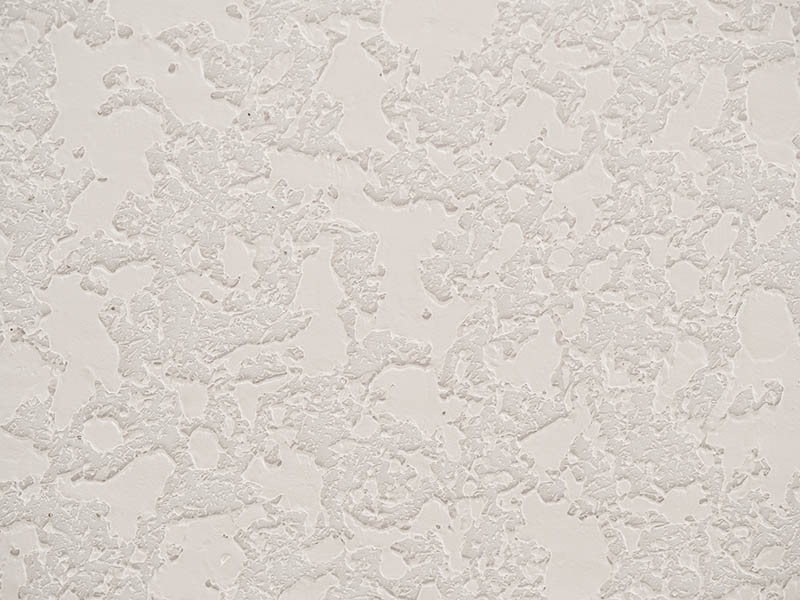
Common across the Southern parts of the United States, Knockdown or Splatter Knockdown refers to mud that is ‘splattered’ on the walls (usually sprayed on with a texture gun) and then ‘knocked down’ using a large knife. You will often find this design in hotel rooms as it is an ideal replacement for a wallpaper.
To create a splatter knockdown ceiling design, you will need mud (texture material), a supply of compressed air, a texture tool (such as a brush, towel or a sponge), and a knockdown tool or a knife.
First, spray the mud onto the required surface. Then, dab the wet layer to form a rugged pattern of peaks using the texture tool. Finally, you need to flatten out or ‘knock’ down those peaks with the side of a knife or a knockdown tool. The key is to avoid too much pressure as it will give a weird look. Also, you must plan the strokes first otherwise you can ruin the texture while it’s still wet.
4. Spray Sand
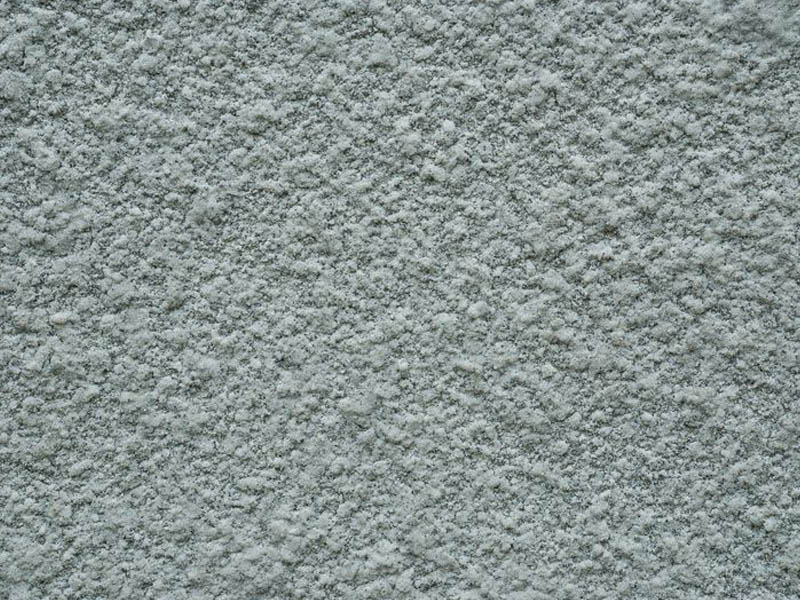
Spray Sand is relatively new but a more feasible ceiling design in terms of ease of creating and the items required. All it takes is the mud mixture and a spray gun. You can achieve an impressive ceiling design that looks elegant and sophisticated within minutes. However, you need to mix the sand with cold water and leave it overnight before applying.
This type of ceiling design is a bit similar to orange peel but looks more artistic and does a fine job of hiding any imperfections in the ceiling.
Ceiling Designs with Hand Techniques
5. Skip Trowel - (Santa Fe, Mud Trowel Knockdown, Spanish Knockdown)

Source: peckdrywallandpainting.com
Also called Santa Fe, Mud Trowel Knockdown or Spanish Knockdown, the Skip Trowel is one of the most well-known types of drywall finish. Although the term has been used to refer to different types of patterns made from this technique, a true skip trowel refers to the texture created with a special knife that is slightly curved and measures 18 inches across. The mixture of mud is kept slightly runny and applied in a thin coat so that the mud ‘skips’ when you gently glide the angular knife over it, leaving behind a unique texture.
6. Stomp Knockdown Texture

Like most knockdown ceiling textures, a Stomp Knockdown texture can be made using a roller but requires a stomp brush as well. To create this design, you need to ‘stomp’ the brush into the drywall mud applied on the surface that is to be decorated. Gently press the brush all across the ceiling/wall as if it were a stamp and then use a knockdown knife to smoothen out any peaks or high spots. It is recommended that you use compound mud for this purpose as it adheres to the surface properly. This allows for easy designing, giving a neat look in the end.
7. Spanish or French Lace

Source: grevedrywall.com
Although quite similar in appearance to the Stomp Knockdown texture, a Spanish or French Lace ceiling design is slightly more difficult to make.
What makes a Lace ceiling stand out is the fact that it uses dark and light tones of the same color. The surface is first covered with one shade and then when it dries, the pattern is added on top of it in a different color. This makes the wall look like a lacy fabric.
Spanish or French Lace is also used to cover badly cracked walls and ceilings as it is a good way to mask any flaws in the surface.
8. Brocade Knockdown Texture
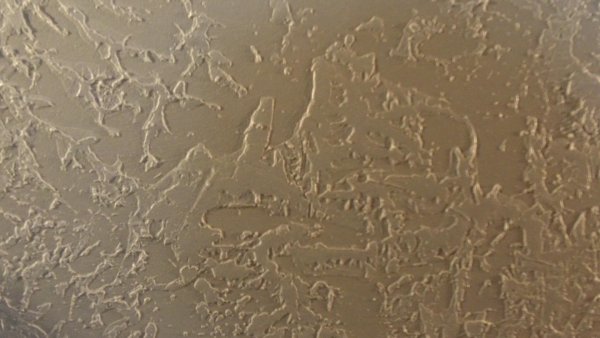
Source: seejanedrill.com
Also called a Knockdown Hand Texture, a Brocade texture is one of the best ceiling designs for beginners as it does not require a compressor, spray gun or any other fancy tools. All you need is a knockdown tool (a broad taping knife will do too) and two hawks (plastic or metal both are fine). Put some joint compound on one hawk and then press the other hawk tightly over it. An abstract rugged pattern will form. Now press the hawks to the required surface and then smoothen out the peaks with a knife.
A brocade texture will add a stylish flair to any room and is also good for hiding cracks in the wall paint or even the wall itself.
SeeJaneDrill does a great job of explaining how to achieve this look. Check her out here.
9. Hawk and Trowel Drywall Texture
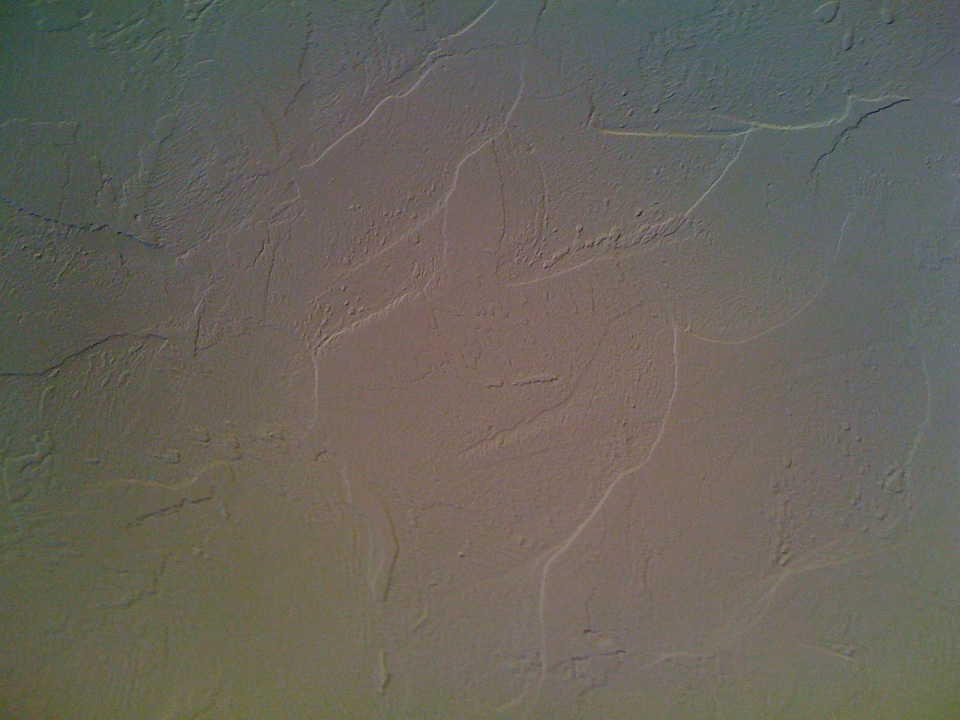
Source: drywall101.com
You might have guessed from the name that this ceiling design is created using a hawk and trowel. A smooth and consistent mixture of mud is poured onto the hawk in a small amount. Then in a swift motion, the mud is scraped from the hawk using a trowel and quickly applied to the ceiling in varied strokes.
The final results of a Hawk and Trowel ceiling design can vary depending on the skills and strokes of the designer as well as the thickness of the material used. Usually, the look resembles waves of drywall mud flowing over more waves of drywall mud.
10. Swirl

Made using conventional hand tools, this type of ceiling design is one of the most beautiful ceiling designs that look simply exquisite. To create this pattern, you will need a bristle brush and a roller. Tradesmen normally apply the mud using a roller. However, for extremely large surfaces, you can use a heavy duty sprayer as well. Then, make circles on the mud while it’s slightly wet by using a brush. The size of the circles will depend on the brush so you can choose the one that seems appropriate.
Depending on your preferences, you can go for big or small swirls as well as a smooth or rough pattern. This design looks best on the walls of a small apartment or on the ceiling of any room.
11. Comb
Truly artistic, elegant and chic, are what best describe the Comb ceiling design. This design is really easy to make and requires only a texturing comb tool. The mud is applied onto the ceiling in a smooth layer. Using the special comb, patterns are created depending on the homeowner’s preferences. You can opt for straight thin lines, waves, arcs or even a combination of them all. When doing the work by yourself, remember to clean the comb after every stroke and wipe any material off the edges. Otherwise, it will disrupt the pattern that you are trying to create.
Most of these types of ceiling designs are beginner-level friendly but if you are unsure about doing it yourself, then do not hesitate to call in the best designers who can do the job for you.
12. Smooth Texture

Nowadays, many newly built homes or renovators are simply opting for smooth ceilings. Although you are still free to be creative with this option, you can include a painted border, or install crown moldings to add a modern and elegant flare to any room.
Happy decorating!

